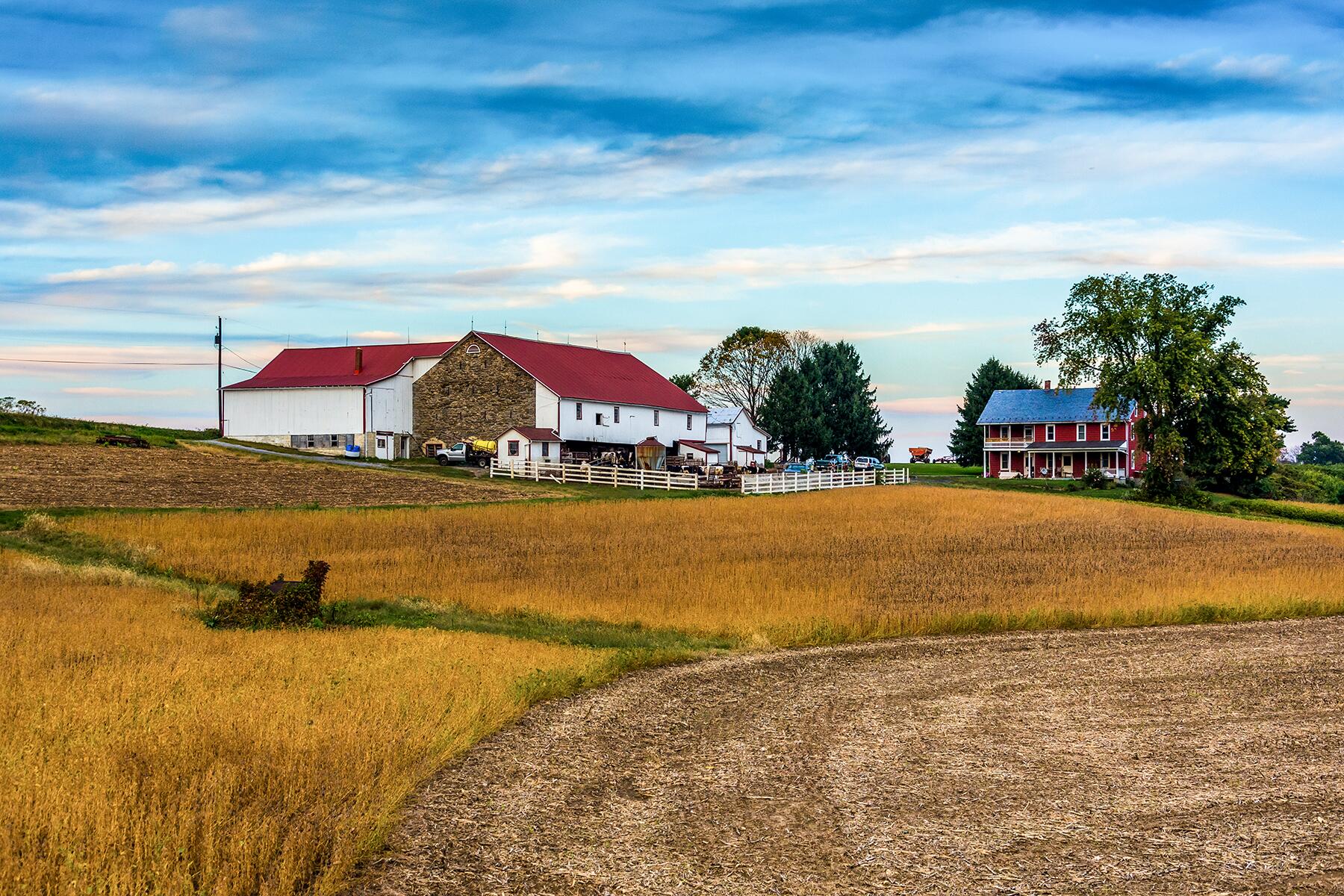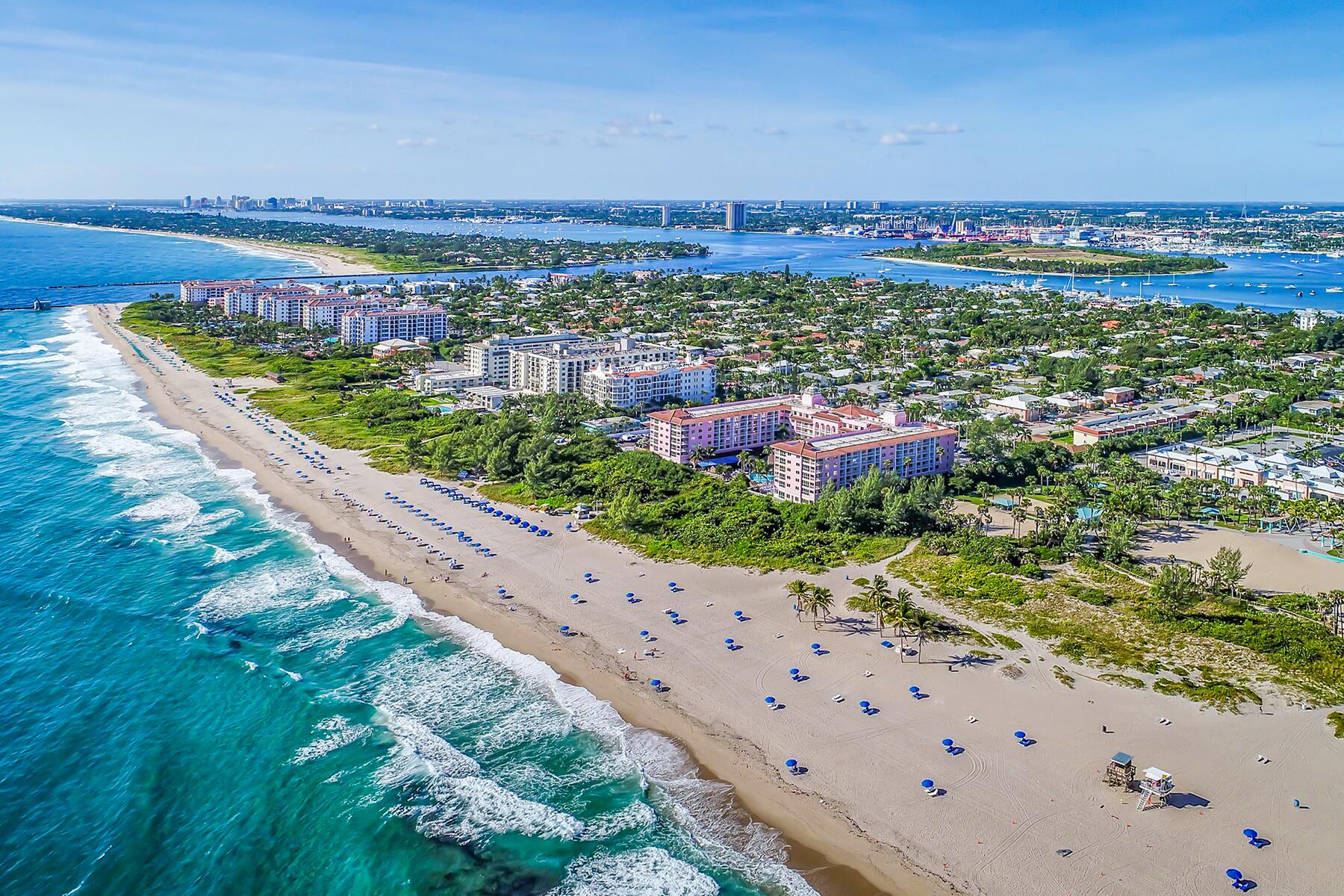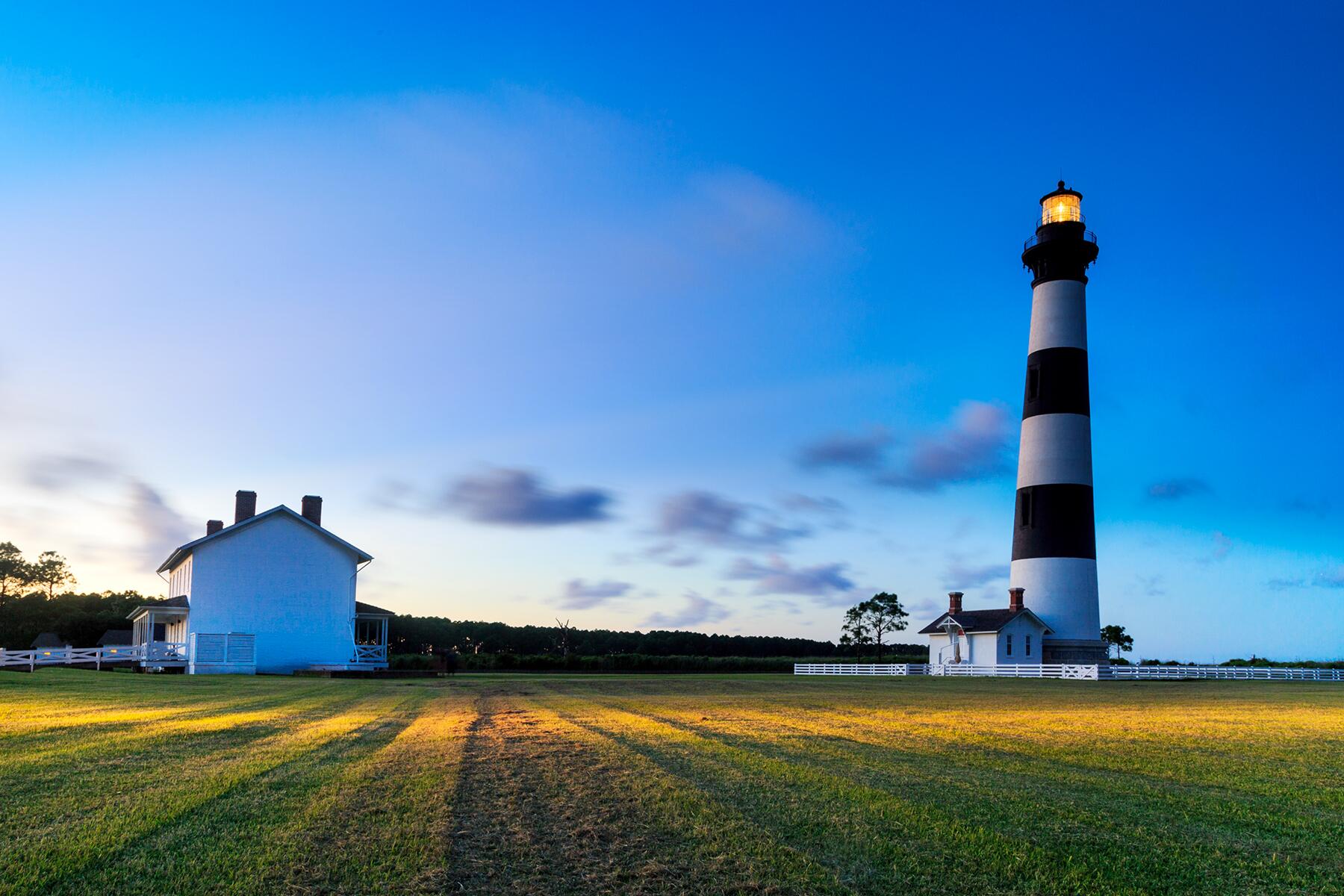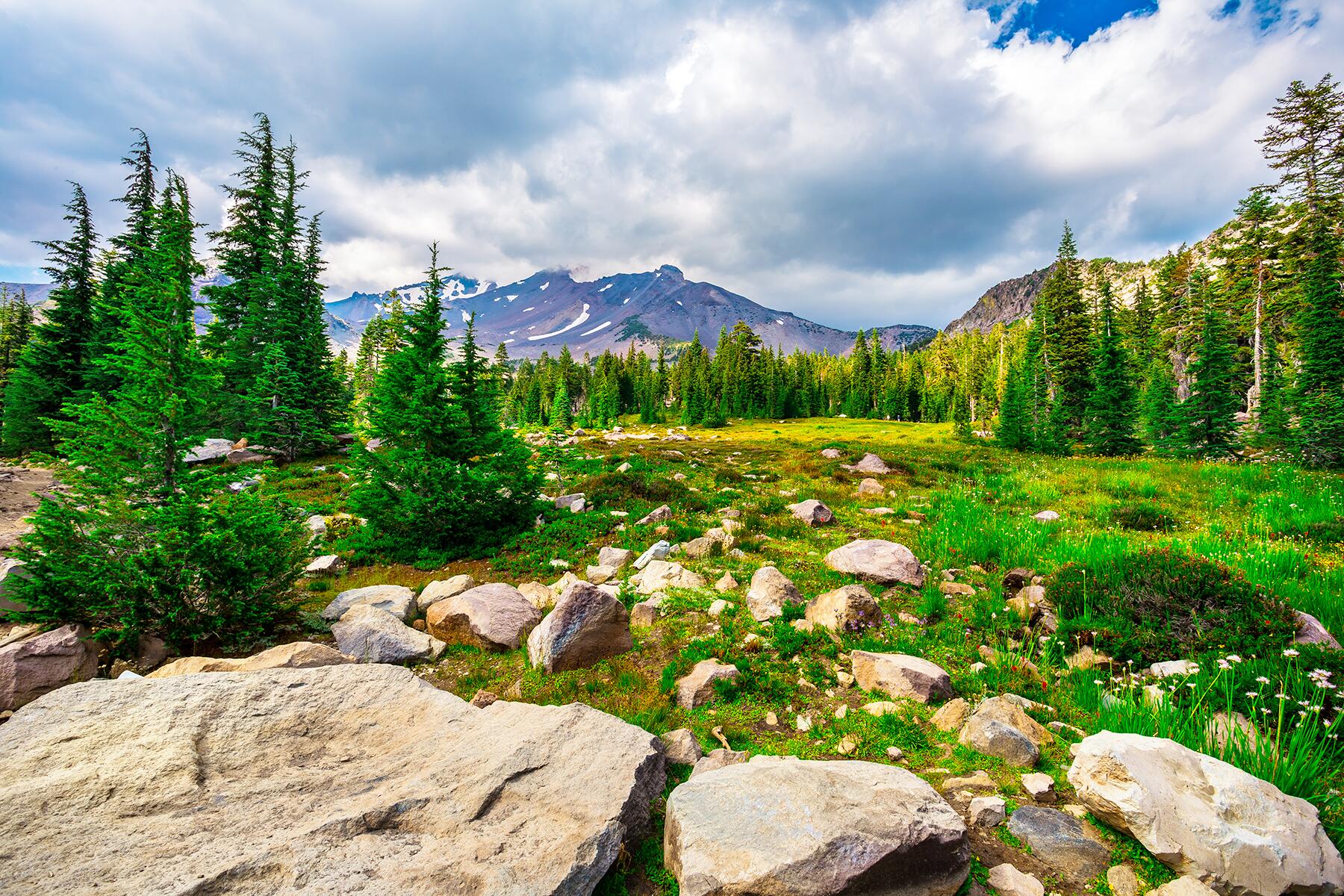Our new series on weekend road trips aims to inspire you for what's to come as we slowly return to travel.
Covid-19 Disclaimer: Make sure to check the status of the states, regions, and establishments in which you’re planning to visit prior to travel. Many regions continue to see high infection rates and deaths, while many states and counties remain under varying stay-at-home orders. Those traveling from areas with high rates of Covid-19 should consider avoiding travel for now in order to reduce spread.
Also note that Lassen Volcanic National Park remains closed and this article should currently only be used for planning purposes for when it’s safe to travel again.
The snowcapped peaks of the Cascades punctuate this outdoorsy region in northern California. Filled with alpine lakes, rushing waterfalls, and little gold-mining and lumber towns, it’s about as far away from urbanity as you can get. Indeed, even before COVID-19, there was no one here (except maybe Bigfoot, of whom there have been sightings). Soaring Mount Shasta, a dormant volcano, overshadows the pine-covered landscape. More volcanic evidence can be found at Lassen Volcanic National Park, with its boiling mud pots and steaming fumaroles. Come to this out-of-the-way wilderness realm with your tent, food-packed-cooler, and hiking shoes to truly get away from it all. If that’s not your style, that’s fine—there are rustic accommodations and local eateries as well.
Recommended Fodor’s Video
GETTING THERE
This is a getaway that requires a car. The total loop is about 650 miles, with the first stop, Mount Shasta, being 275 miles or 4 hours from San Francisco. From Redding, it’s a straight shot down I-5 to I-80 for the 220-mile or 3.5-hour trip back to San Francisco.
Interstate 5 arrows north through the flatlands north of Sacramento, and at some point, you notice a smudge on the horizon that grows larger and larger—finally morphing into majestic Mount Shasta. Even in summer, snow drapes the 14,179-foot peak of this looming presence. You’ll pass by crystal-clear Lake Shasta, popular with houseboaters, swimmers, and anglers in summer. Base yourself in Mount Shasta town, a friendly place in the shadow of Mount Shasta with good sleeping options, restaurants, and art galleries. You’ll get a sense of the mountain’s mystical side as you stroll the old-timey streets, where spiritual centers are tucked between gift shops, bookstores, galleries, and equipment outfitters.
You’ll also find lots of eateries in Mount Shasta. A local lunch favorite is Lilys, a charming café with a patio. The farm-to-table California menu promises healthy, original takes on salads, sandwiches, and soups: cauliflower and hummus, spicy Mongolian chicken salad, and the Shasta turkey burger (with turkey breast, bacon, lettuce, garlic aioli on foccacia).
Then, the mountain beckons, for above all this is a nature lover’s paradise. The must-do is the Everett Memorial Highway, a 14-mile drive to the highest point you can go on Mount Shasta. It takes about 30 minutes from the center of town, but what a 30-minutes it is, with views becoming more spectacular with every curve you take. There are hiking trails and campgrounds along the way—several trails take off from Bunny Flat (it’s popular with snowmobilers in winter). But the pièce-de-résistance comes at the top, where seemingly infinite views take in the surrounding mountain ranges. There are trailheads here, and picnic tables—though it gets a little windy and cold, so not the best for hanging around.
There’s one more trail to consider, the short and simple—but absolutely stunning—Gray Butte Trail. The 2.4-mile track, which starts from Panther Meadows along the Everett Memorial Highway, traipses through wildflower meadows and old-growth red-fir forest, bringing you to the summit of Gray Butte. Here, breathe in the spectacular view of Mount Shasta before you—amazing especially at sunset. Given the shortness of the trail, you can actually time it to catch the mystical peak bathing in pastel colors of the day’s last light then race back down before dark.
For dinner, try Lalo’s Restaurant and Lounge for Mexican. After all, the best thing to follow a dose of fresh air is a heaping taco plate with the requisite margarita.
Start off the day with a bite at Seven Suns Coffee and Café, a local favorite for its breakfast sandwiches, crêpes, and smoothies. Eat in town, or bring it along on your morning hike at Castle Crags State Park, 15 minutes south of Mount Shasta off I-5. Volcanic activity formed these natural spires 200 million years ago. The Crags Trail is steep, but you’re rewarded with fabled views of the crags and Mount Shasta.
Head back north, getting off the main highway at CA-89 and delving into a remote, mountainous, woodsy realm—1 million acres of glorious national forest. Your first stop should be the outdoorsy old lumber town of McCloud, which has been described as a cross between Norman Rockwell and Northern Exposure. Stroll the streets, taking in galleries, shops, restaurants, and bike and camping outfitters, occupying buildings from the late 1800s and all in the shadow of the ever-looming Mount Shasta. The McCloud Heritage Junction Museum has impressive artifacts related to the town’s history. If you’re hungry, White Mountain Café on Main Street is a small-town diner for the likes of fried chicken, seasonal soups, and the mushroom Swiss burger—everything is made from scratch.
Ten miles outside town, hit the trail at McArthur-Burney Falls Memorial State Park, where a short hike leads to spectacular Burney Falls. With its ribbon-like streams plunging a hundred feet into a pool, appearing like a wall of water, it’s no wonder Theodore Roosevelt dubbed it the “eighth wonder of the world” when he traipsed through in the early 1900s.

From here, it’s about an hour and a half drive to Lassen Volcanic National Park, if you drive straight. But you’ll want to take your time. Lassen is, of course, famous for its volcanic landscape, so it makes sense that the road you’re driving on is a portion of the Volcanic Legacy Scenic Byway. You can get a closer look at volcanic artifacts at Bartle, where a 60-mile geologic loop tour takes you to past craters, lava flows, and caves; McCloud’s Forest Service station has maps.
Farther south on CA-89, you come to Subway Cave Lava Tubes. A self-guided trail leads you into an eerie tube created 20,000 years ago when flowing hot lava formed a hard cap on top while molten lava continued flowing beneath. The 1/3-mile trail wanders into the shell left behind. Bring a light—it’s pitch-black in there.
For dinner, there’s not much around here, as you will see. Burney has a few restaurants right on the main street, including Anna’s County Kitchen, with burgers, salads, and sandwiches. Alternatively, if you’re staying within the national park, Drakesbad Guest Ranch has a restaurant.
Today, it’s all about Lassen Volcanic National Park before heading home. One of the nation’s least-visited national parks, Lassen is famous for its display of hydro- and geothermal activity. In fact, this is one of the only places in the world where you can see all four types of volcanoes: cinder cone, composite, shield, and plug dome. Lassen itself is a plug dome that last erupted in 1917; geologists say it’s the most likely volcano to erupt in the next hundred years.

A 30-mile self-guided driving tour takes you through the park. Be sure to get out of your car at the various stops for a closer look. At Bumpass Hell, a 3-mile trail wanders past steaming mud pots, fumaroles, and hissing boiling springs that tell you the ground is alive. At Sulphur Works, you’ll see more hissing fumaroles and gurgling clay, including a 5-foot mudpot. This was the heart of the extinct Brokeoff volcano, which was active 600,000 to 200,000 years ago.
The park also contains more than 150 miles of hiking trails, from easy to hardcore. The 5-mile round-trip hike to Lassen Peak is one of the most rewarding, with the spectacular far-off views of the High Sierra from atop; it takes up to six hours. Mill Creek Falls, a 3.8-mile trail through the forest to the park’s highest waterfall, is popular too.
As you head toward home, consider stopping in Redding. Here, the Sundial Bridge, a pedestrian bridge designed by world-famous architect Santiago Calatrava, straddles the Sacramento River. It’s fun to walk across and access trails through botanical gardens on the other side. Le Testimony Bistro is a good place to fuel up on 100% organic sweet and savory crêpes, soups, omelets, and salads—and locally sourced coffee—before hitting the road.
WHERE TO STAY
Lodging is sporadic in this unpeopled part of northern California. If you’re a camper, there are plenty of places to pitch your tent in Shasta-Trinity National Forest and Lassen Volcanic National Park. The Mount Shasta Resort in the town of Mount Shasta has romantic private cottages along Lake Siskiyou, many with full kitchens. In the national park, Drakesbad Guest Ranch in Warner Valley is a popular historic property in Warner Valley—call up to two years in advance for a reservation.
WHEN TO GO
Extreme winter weather can grip this region any time between late October and late June when backcountry roads are closed by snow; the main park road closes typically November to May. If you are here during winter, you may need snow chains. The best time to visit is mid- to late summer.





